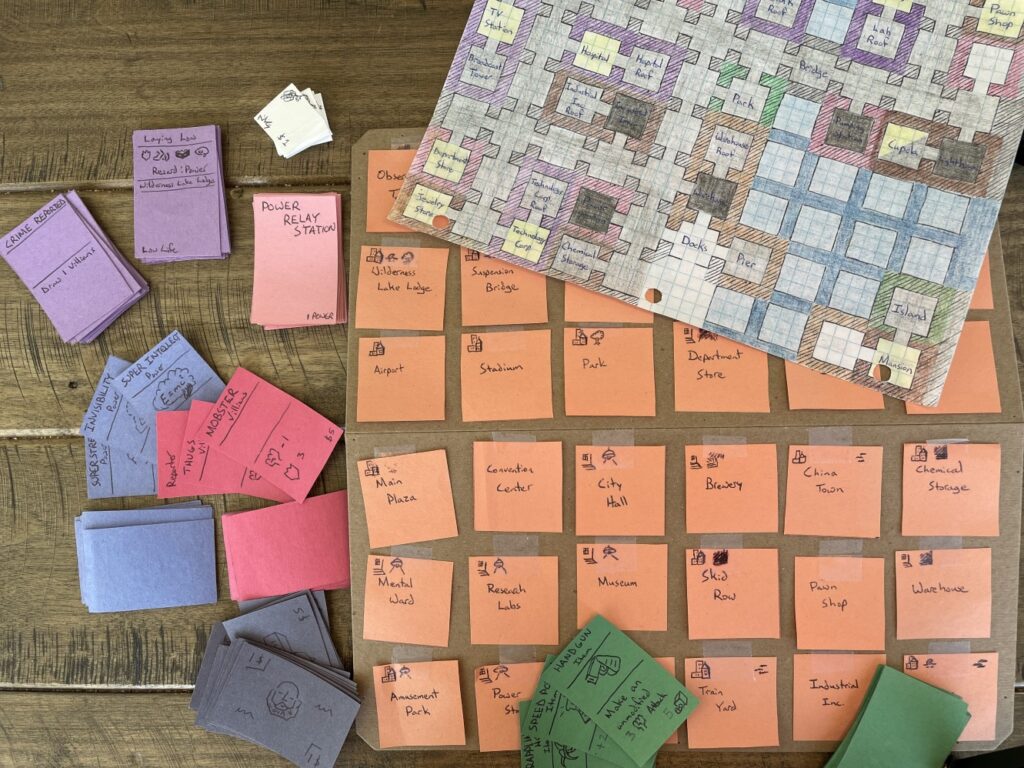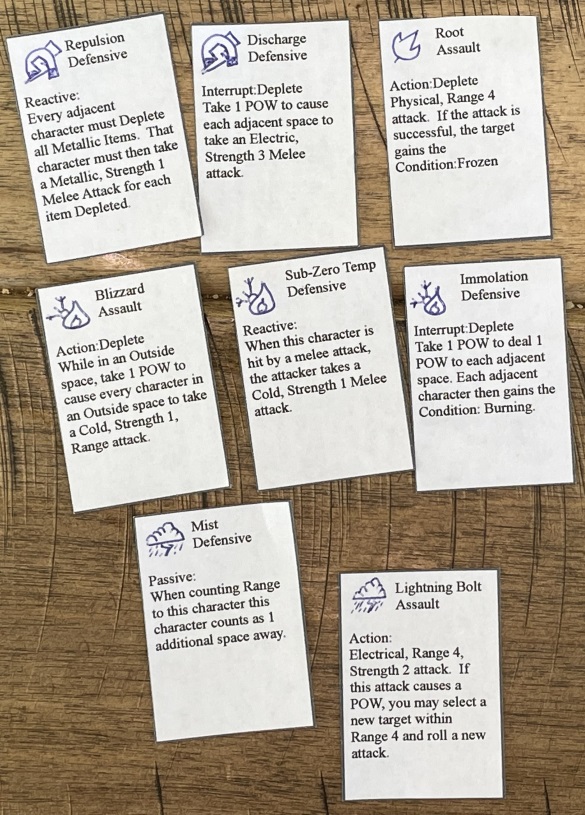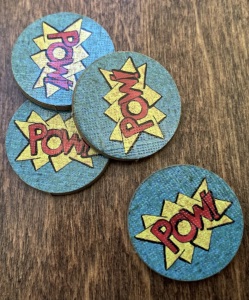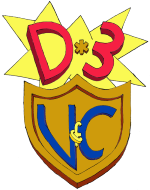In this post we will look at the history of how Vault of Comics: The Superhero Board Game™ was created. This should show the evolution of the game and the ideas that the game tries to build upon.
The first thing to know is a bit about me, David Shankle, as the creator of this game. All my life I have been exposed to comics. I grew up watching TMNT, Ghostbusters, Masters of the Universe, and other great Saturday morning cartoons. I love to play just about any type of game: board games, cards games, tabletop war games, pen and paper rpgs, and even video games. I am also a dad of three kids and the history of this game starts with me attempting to introduce my kids to the things I loved in my own childhood.
Almost three and a half years ago my eldest son and I were watching through various series of tv cartoons and had just finished some super hero cartoons like Spider-man and Batman the Animated Series. Somewhere around that time he asked me if I had any super hero board games. I didn’t…
I then turned to the internet to look for a good super hero board game to remedy this apparent lapse in my board game collection. As I started looking through the Board Game Geek and other websites, it became apparent that there was very few options. A number of games were older and no longer available to purchase, some games were very shallow and offered nothing more than a theme overlay, and some of the games just seemed very poor mechanically. My son then said I should just make my own.
Make my own!!!!
What kind of game should I make? I asked him what he wanted and made a list that included things like the options to make your own character with their own powers, play as either a hero or villain, limit abstraction, add rpg elements, let you control teams, the game needed to feel like a living city, it had to tell a story, it needed to be re-playable, and it needed to be fairly simple and quick.
Now we had been playing Arkham Horror 2nd edition around this time so my first thought was to make a re-themed clone of that game. That would tick off a lot of the above checklist so I started there. The problem I ran into was how to make a game that would allow you to play as the hero/villain, the simplicity, and the time to finish a game. I pushed on anyway.

The first game model centered upon a map where you could travel between various city locations and have random encounters at these places. The objective of the game was to defeat a single villain that would grow stronger as locations were ‘targeted’. It was up to the player to try to resolve these events at these locations to keep the villain in check. It worked and had potential (Maybe a future game when VoC is funded and successful in the near future!)
We played the game and it was apparent that this wasn’t exactly what my son envisioned. I rethought the game and decided that a card game may be better. It would be quicker and simpler than the sprawling behemoth that was the original idea. I switched to this format and pursued and found a few super hero card games which I purchased.
While these card games are fun, they fail to meet a number of the above criteria. They were either linear in storytelling, too random, too abstract, etc. It became clear that this option wasn’t working so I went back to the design project.
The next iteration of the game is what directly became VoC. I kept the cards to represent the various powers and items. This worked well as you could mix and match to create your own custom characters. The first attempt was to create a small excel spread sheet with a few random powers. These were created from gut feeling only and the balance was all over the place. To get the cards in a more manageable format, I quickly grouped these together and affinity power groups were created.

The game board itself also evolved during this time. The idea of an over map of a city full of locations disappeared and I decided that the game would revolve around a single street battle or fight episode. The board spaces now represented either a street or a building and the idea that walls could block line of sight was devised.
At this point, the game was successful in meeting my son’s original expectations. It was fun and had potential but I had to make it better. My goal was to have a game we really wanted to play. I then started researching board game design and started using that knowledge to make the game better.

I started building out the scene and thought that taking the game to the third dimension with interior and rooftops came into being. I added terrain features as the idea of a large super powered being chucking cars or dumping barrel of chemicals on the protagonist are some classic concepts in comics.
Citizens are also important. Heroes are suppose to have side kicks and henchmen flock to villains. This game needed a way to make the city alive not just with objects but with other people. The best part of this, at least in my mind, is that the game looks full as the board is filled with all these tokens. They provide various options, modifiers, and add a random element to help with replay value. The game begins to look complicated as there are so much displayed but the simplicity is still there as it is really just tokens that only add value by removing the abstraction.
The game is really nothing more than a card game that uses dice to determine if an action is successful. The beauty of the game is that it uses cardboard tokens to bring the action to life. At its core, VoC is nothing more than moving across a grid and rolling dice. The aspect that opens up the game is the interaction of cards, positioning, and the extra terrain features and citizens that combine to add a strategic experience. This combination takes some rather simple game mechanics and opens up a nearly bottomless possibility of combos and potential. The evolution of the game was complete!

When the prototype was printed I was able to go back and see how well the original design goals had been met. The game truly allowed character customization with various powers and items. The ability to select which team your forces were fighting for (vigilante or villain) allowed the teams to be further differentiated. The three dimensional board with terrain features, walls, citizens, allies, fire/water/ice/contamination markers ensure that one can visualize the city. Abstraction is at bare minimums for a board game and the evolving story can feel very cinematic.
With item after item on the checklist being checked off, my favorite part still comes back to the simplistic nature of the game. A simple turn structure keeps the action moving. The fact that the rules are mostly contained on the cards themselves or located on a short keyword glossary mean that you don’t need a technical manual to play. Nearly all rules except for edge cases can be summarized on a single reference page while still looking amazing and capturing the imagination of your favorite comic book moments!

